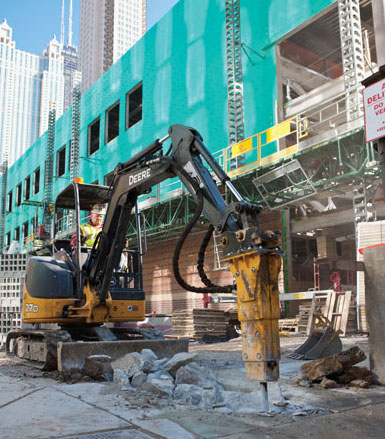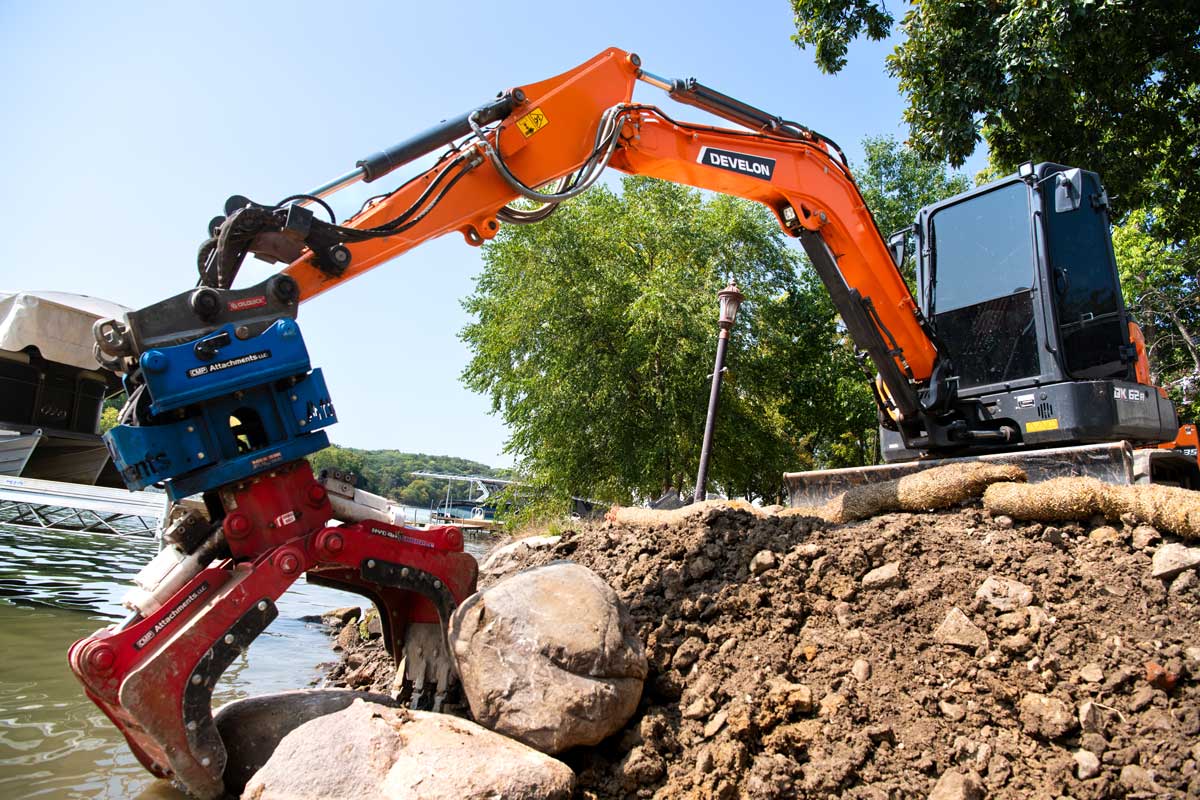COMPACT EXCAVATOR – Hammer with Care
Sometimes the term “compact excavator” is a bit of misnomer. These long-armed tool carriers can do more than just your typical dig operations. Although it’s most commonly known for teaming with a bucket and getting dirty, this versatile piece of equipment is also used in a wide range of applications such as augering, brush mowing, blade work and even demolition. Thanks to its size, strength and ability to use numerous attachments, a compact excavator offers operators a powerful punch in breaking concrete and other materials, particularly when the job moves indoors.
In demolition and other applications, a solid maintenance plan is needed to keep a good partnership between man and machine. Since demolition can take a tougher toll on an excavator, operators should refer to the machine’s operator’s manual for a detailed maintenance regimen. Compact excavator maintenance should be a routine part of any operator’s work schedule in order to avoid excessive downtime and lost productivity from spending valuable time in the shop or having to replace a part.
Daily maintenance usually requires bucket pin greasing and various checks of hydraulic and engine oils on the actual mini excavator. To make these tasks easier, be sure to have an extra set of filters, oil and other general maintenance items on hand. Many manufacturers have moved to 500-hour engine oil change intervals, saving customers time and money. Hydraulic oil should be carefully maintained and tested for contamination, but can last several thousand hours before changing on some models. As usual, oil and fuel filters will need to be changed as recommended.
A careful inspection of hydraulic hoses, electrical wires, engine coolant levels and hoses should be done as well. Since demolition often produces a dusty jobsite, operators may need to clean and replace the air filter more frequently. When preparing for maintenance, don’t forget the hammer itself. A hydraulic breaker will come with its own manual and detailed maintenance program that should be followed each day. Greasing the breaker should be done regularly. Here are a few quick tips:
- Do not drop the ends of the hydraulic hoses in the dirt.
- Do not leave the hammer’s in and out ports open onsite for sand and dust to enter.
- Every 10 hours or weekly, the operator should remove the tool’s retaining pin and tool and inspect.
- Every 50 hours or monthly, the operator should check the tool shank and tool bushings for wear.
- Hydraulic hoses should also be checked monthly or every 50 hours.
- Annual service is recommended after 600 operating hours.
Of course, maintenance is a critical factor for both the excavator and the breaker attachment. Some new hydraulic breaker attachments on the market feature auto-lube functions that reduce the amount of overall maintenance, but it is still recommended that you inspect the internal components at least once a year. These standard maintenance intervals ensure proper tolerances are kept up on normal wear items like tool bushings and tools, which are common wear items on all breakers.
The most important key to productive operation is that operators must always follow the manufacturer’s recommended guidelines for safe operation — it is especially important to follow all weight requirements for compact excavators and their attachments. Stability is critical for safe, productive operation on any jobsite.




